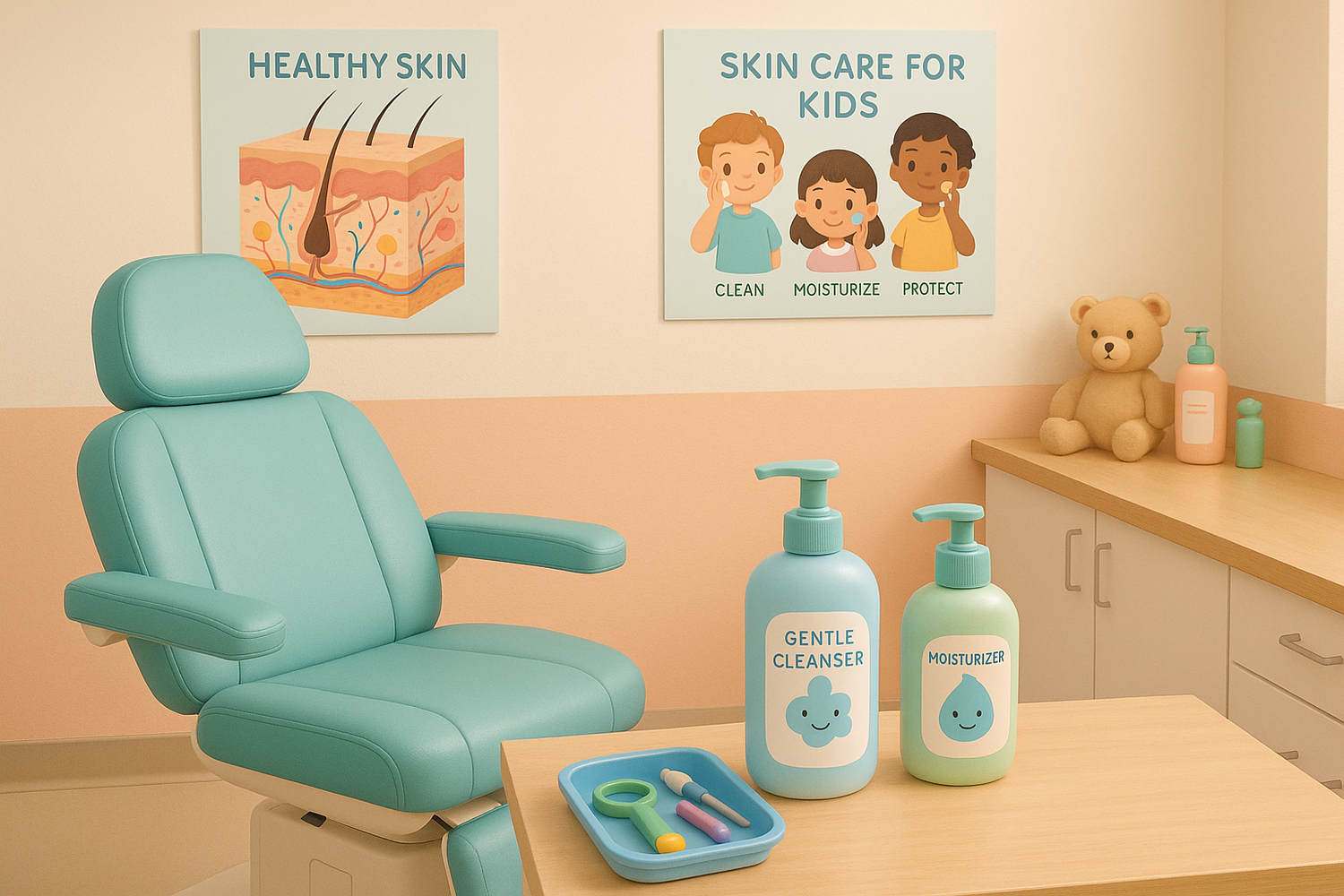
When to See a Dermatologist (and What to Ask): A Guide to Your Child's Skincare
When to See a Dermatologist (and What to Ask): A Guide to Your Child's Skincare
Author: Srijani Mitra
Date: September 1, 2025
Children’s skin is delicate, constantly changing, and sometimes downright mysterious. From newborn rashes to pre-teen acne, kids can experience a wide range of skin conditions—some harmless and fleeting, others persistent or uncomfortable. As a parent, it can be hard to know when to monitor at home and when to seek expert care. This guide will help you decide when it’s time to see a dermatologist and how to make the most of the visit.
What Is a Dermatologist?
A dermatologist is a doctor specializing in diagnosing and treating conditions that affect the skin, hair, and nails. Pediatric dermatologists focus specifically on children, managing everything from eczema and birthmarks to acne and scalp issues. While your pediatrician is often the first point of contact for any health concern, including skin problems, a dermatologist can provide specialized insight, advanced treatment options, and peace of mind.
Signs Your Child May Need a Dermatologist
It’s normal for children to get occasional rashes or dry patches, but persistent or severe issues warrant professional attention. Consider scheduling a dermatologist visit if you notice:
-
Rashes That Persist or Worsen
Rashes are common, but if a rash lasts more than 1–2 weeks without improvement, spreads, is painful, oozes, or is accompanied by fever, it’s time for an evaluation. Conditions like eczema, psoriasis, or contact dermatitis can appear similar but require different treatments. -
Persistent or Severe Eczema
If your child’s eczema doesn’t improve with basic care, interferes with sleep, mood, or daily life, or causes frequent infections from scratching, a dermatologist can recommend stronger treatments, lifestyle adjustments, or allergy testing. -
Skin Infections
Impetigo, ringworm, and warts are common in children. While some clear on their own, others are contagious or require prescription treatment. A dermatologist can provide targeted care and advice on preventing spread. -
Acne That Is Worsening
Acne can appear even in 9- or 10-year-olds. Early intervention can prevent scarring and support your child’s confidence. Neonatal acne (in the first few weeks) usually resolves on its own, but infantile or pre-teen acne may need treatment. -
Hair and Scalp Issues
Hair loss in patches, persistent itching, or thick scaly patches may indicate conditions like alopecia, scalp psoriasis, or fungal infections that require professional care. -
Nail Changes
Thick, discolored, or painful nails—especially alongside other skin conditions—can signal underlying issues that dermatologists are trained to assess. -
Suspicious Moles or Growths
Any mole or skin spot that changes in size, shape, or color—or bleeds or itches—should be evaluated by a dermatologist.
What to Expect at the Appointment
Heading to a dermatologist for the first time can feel a little intimidating, especially for your child. But most pediatric dermatologists are proficient at making kids feel comfortable, and the appointments are usually simple and quick.
The doctor will start by asking about your child’s health history, any symptoms they’ve had, and how long the problem has been going on. They’ll examine the skin and may use a special tool called a dermatoscope to look at spots more closely.
In some cases, they may recommend allergy testing, skin scraping, or even a small biopsy. These are typically fast and done in-office.
Questions to Ask the Dermatologist
As a parent, you’re your child’s best advocate. Coming to the appointment with questions can help you leave feeling informed and confident about next steps. Here are some useful questions to ask:
-
What is this condition, and what causes it?
Framing a question like this helps in understanding what you’re dealing with. -
Is this a chronic condition?
Knowing whether the issue is long-term or likely to go away helps you prepare accordingly. -
What treatment would you recommend, and how long will it take to work?
Some skin treatments take a lot of time. It’s helpful to know what to expect. -
Are there any side effects or risks with this treatment?
This is especially important if your child is being prescribed medicated creams or certain oral medications. -
Are there lifestyle changes that can help?
Diet, stress, sleep, and hygiene can all affect skin health. Knowing this helps you incorporate lifestyle changes for your child. -
Should I avoid certain products, fabrics, or foods?
Many skin conditions are aggravated by triggers. A dermatologist can help identify them. -
When should we follow up?
Some conditions need monitoring, while others may not need a second visit.
Conclusion
Skin issues are one of the most common reasons parents take their children to the doctor and for good reason. Healthy skin is essential for comfort, confidence, and overall well-being. Seeking expert care isn’t just about treating rashes or breakouts; it’s about understanding your child’s skin, preventing complications, and giving them the confidence to feel comfortable in their own skin.
If you’re managing persistent eczema, unusual rashes, or any concerning skin changes, don’t hesitate to consult a dermatologist. Early guidance can make a meaningful difference in your child’s health and happiness.
